|
A String Around Earth: 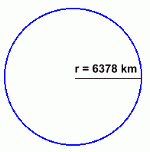
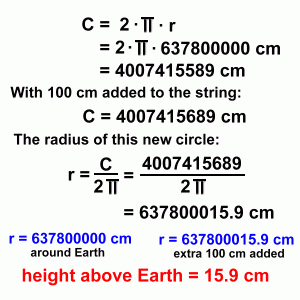 Here are the calculations that show the height of the string above the Earth, after you add one metre. We first worked out the circumference of the Earth, which will be the length of the original string. It's 4,007,415,589 cm. Next we added 100 cm, making the length of the string 4,007,415,689 cm. Finally, we solved for the radius of this new bigger circle. When compared to the original radius, you can see that the difference is in fact 15.9 cm. (The value we used for the size of the Earth wasn't precise ... but since the size of the sphere is irrevevant to the answer, we really can use any degree of accuracy we want, as long as we carry enough decimal places to make the difference show up). A String Around a Basketball: 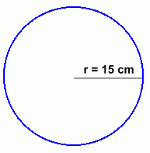 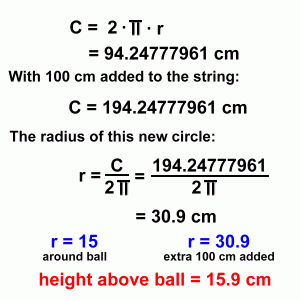 Here are the calculations that show the height of the string above a basketball, after you add one metre. We first worked out the circumference of the ball, which will be the length of the original string. It's 94.24777961 cm. Next we added 100 cm, making the length of the string 194.24777961 cm. Finally, we solved for the radius of this new bigger circle. When compared to the original radius, you can see that the difference is once again 15.9 cm. (The value for the size of the ball wasn't precise ... but since this number is irrevevant to the answer, we really can use any degree of accuracy we want, as long as we carry enough decimal places to make the difference show up). A String Around Any Sphere: 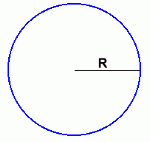 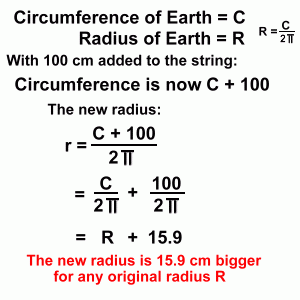 Here are the calculations that show the height of the string above any sphere, after you add one metre.
Here are the calculations that show the height of the string above any sphere, after you add one metre.We'll make the radius R, and the circumference C. This will be a proof that it works for any values of these measurements. We added 100 cm to the circumference, making the new longer length of the string C+100 cm. Next, we solved for the radius of this new bigger circle. After some simplifying, you can see once again that the new radius is bigger by exactly 15.9 cm. Bcause we did this without specifying values for R and C, it is a proof that it will work for any sphere. |